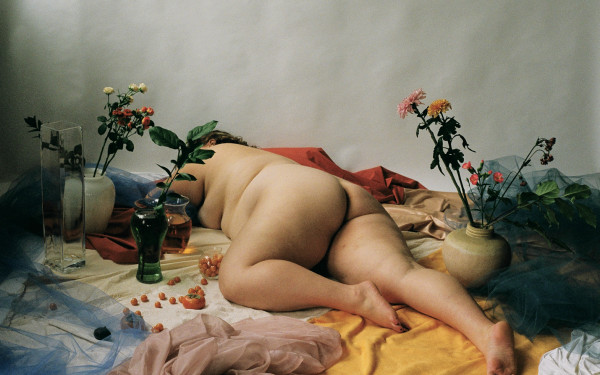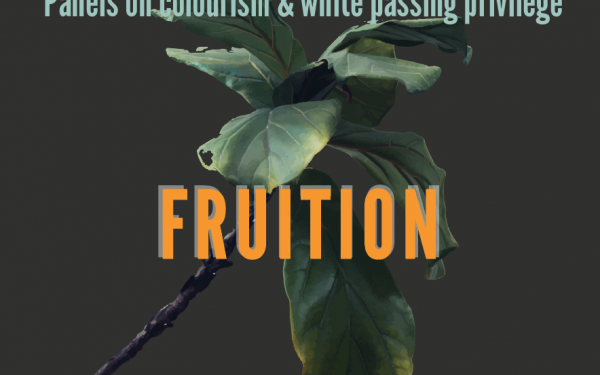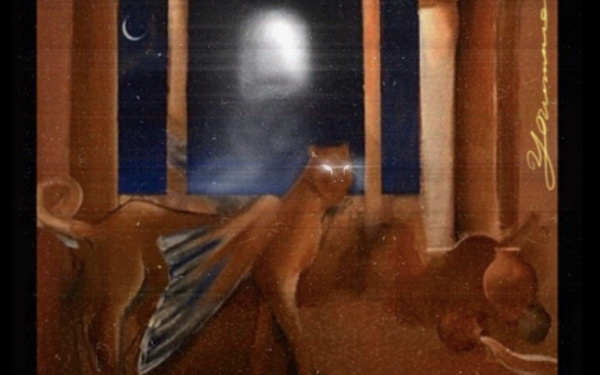MUZ festival breaks new ground while maintaining tradition
Montreal’s annual music festival features diverse musical influences
The diversity of Montreal was showcased to the public from Oct. 3 to Oct. 6 as the 14th annual MUZ festival transformed Le Studio TD into a hub of world music.
Over four days, the festival featured 18 artists, both local and from around the world, who now call Quebec their home.
The festival’s mission is to promote the diversity of Quebec artists, whether they originate from Quebec or elsewhere. One such artist is TDH, an Afro-Indigenous musician from Quebec whose real name is Tommylee Dauphinais Howard. He performed on Oct. 3.
“I want to build something with my music, and innovate,” Howard said.
Howard said his art is informed and influenced by his ADHD. In French, ADHD translates to TDAH, making the name TDH a play on words, according to Howard. His band takes their inspiration from various genres, playing a mix of indie rock, Quebecois reggae, R&B and hip hop. Their keyboardist gave a drony, synth-pop experience towards the end of their performance, reminiscent of Black Moth Super Rainbow.
Since 2022, Howard has been working on his album Écoutez Métamorphose or Listen to My Metamorphosis, which he plans to release in 2025.
Many MUZ artists draw from their cultural roots, filtering traditional sounds through a modern musical lens.
“My music has deep roots in Latin genres, but I’ve always been fascinated by the way electronic instruments can complement traditional sounds,” said Stephanie Osorio, a Colombian artist who performed at MUZ on Oct 3.
Osorio takes inspiration not just from Colombian cumbia and electro, but also from the Afro-Latin music of South America, Brazilian bossa nova and American jazz.
“The fusion of cultures in music is something that has always spoken to me,” said Osario, who is not only a talented singer but also a well-rounded multi-instrumentalist.

Osorio enjoys the music of her contemporaries like Lido Pimienta and Silvana Estrada, who push the boundaries of Latin music as she does. She possesses a tremendous command of South American and Caribbean music. Her performance on Friday spanned the musical traditions of the Southern Hemisphere From cumbia to salsa to samba, Osorio navigates these genres with ease.
“I like to keep my ears open to a mix of traditional and modern music, as I feel both are essential to my evolution as an artist,” she said.
Oppression is a common motif in folk music, and the music of the Gnawa is no exception.
The group Boulila, founded by Yassine Boudouch, performed on Oct. 4. The members played several types of music, including traditional Moroccan Gnawa and a type of Gnawa fused with jazz, funk and Afrobeat. They performed their set using only traditional Moroccan instruments, including the three-stringed guembri and the castanet-like qraqeb.
“Gnawa music is the music of slaves,” Boudouch said. For centuries, Gnawa music was performed exclusively in secret ceremonies by enslaved Black Africans, who were forcibly taken from the deserts of Western and Central Africa to Morocco beginning in the 11th century.
Over time, the West Africans brought to Morocco began integrating with the broader Islamic culture. This cultural exchange led to a blending of languages, practices and music, establishing what we know today as Gnawa.
Montreal's diversity is best reflected through the music of its inhabitants, and MUZ festival was a testament to that. MUZ presented different cultures not as separate entities, but as part of humanity's ongoing story. While each artist's main goal was to promote the music specific to their culture, they did much more than that. They combined it with other genres and allowed novel concepts to inform how their art was created.


_600_832_s.png)




